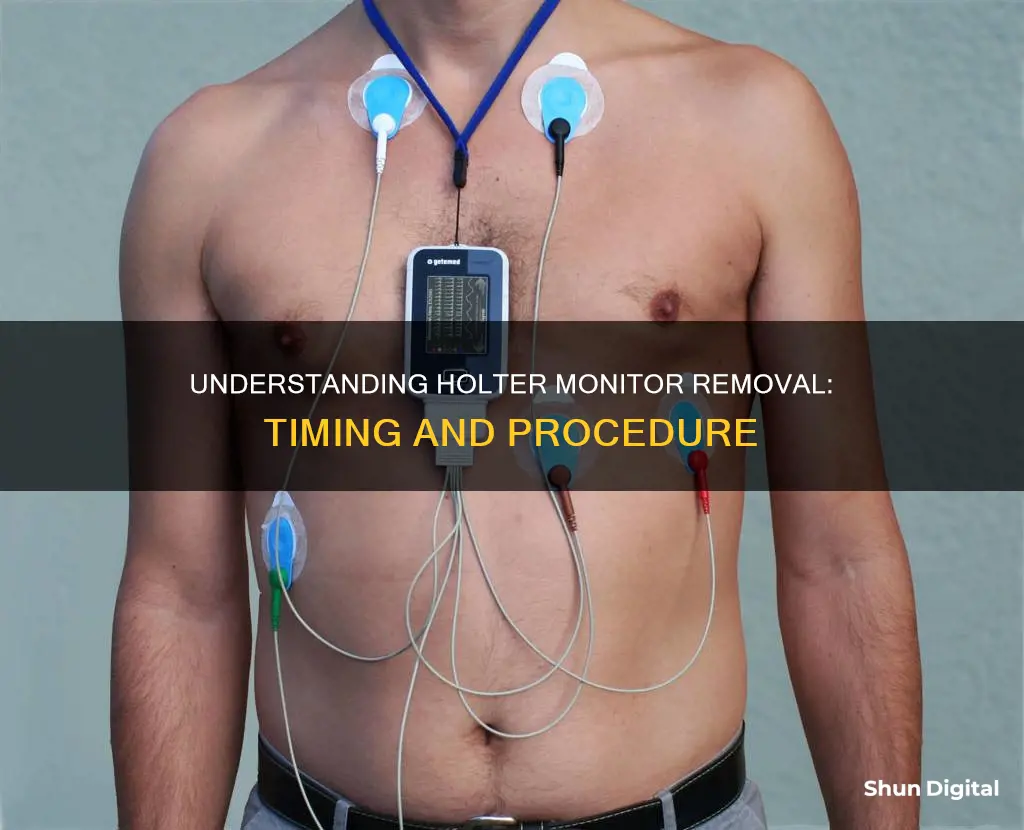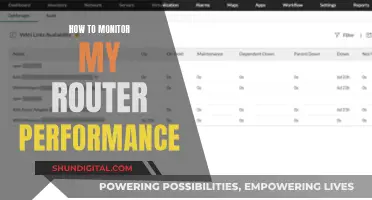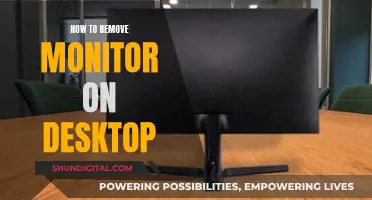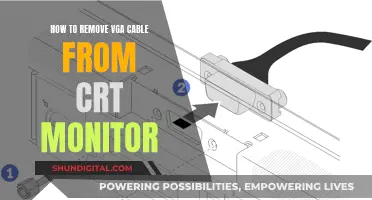
A Holter monitor is a small device that records an individual's heart rate and rhythm over a period of 24 to 48 hours. It is a type of portable electrocardiogram (ECG) that is used to detect irregular heartbeats. The monitor is typically worn for 24 to 48 hours, but this timeframe may vary depending on the type of monitoring used. It is important to remove the monitor after the specified time period to avoid skin irritation and to return it to the doctor's office for evaluation.
| Characteristics | Values |
|---|---|
| How long to wear the monitor for | 24 to 48 hours |
| When to remove the monitor | After the data measurement period is over |
| What to do after removing the monitor | Dispose of the electrodes and put the device back into its box or packaging |
| How to remove adhesive marks | Use water, alcohol, mineral oil, or lotion |
What You'll Learn

After the 24-48 hour period
You will then need to return the equipment to your cardiologist within a specified period. If you were asked to keep a diary of your activities and symptoms, give this to your doctor, too. You may have to physically go to the cardiologist's office to return the monitor or simply mail it back. Your cardiologist will tell you how to return the device before you leave with it.
After the monitor is sent back, it takes about 10 days for the results to be ready. Your doctor will go over the results and any recommendations with you. They will read the data from the machine and interpret it, deciding on the next steps for your treatment. Depending on your symptoms, the results might show if you have a heart rhythm disorder such as atrial fibrillation, bradycardia, tachycardia, or premature ventricle contractions.
Your cardiologist may take care of all this with a phone call instead of a follow-up appointment.
Adjusting Monitor Settings: A Guide to Resizing Your Display
You may want to see also

When the battery is low
When wearing a Holter monitor, it is important to be aware of the device's battery life and to know what to do if the battery is low. A Holter monitor is a small, battery-powered electrocardiogram (ECG) device that records your heart's electrical activity over 24 hours or longer. It is typically powered by a single battery, which may need to be changed during the monitoring period.
Before starting the monitoring, your healthcare provider should instruct you on how to change the battery and ensure that you have extra batteries on hand. The battery life of a Holter monitor can vary depending on various factors, such as the quality of the battery and the amount of usage. It is important to monitor the battery level to ensure that the device continues to record your heart's activity accurately.
If the battery is low during the monitoring period, you will need to replace it with a fresh one. To do this, carefully disconnect the monitor from the electrodes, following the instructions provided by your healthcare provider. Replace the old battery with a new one, making sure to match the battery size and type. Secure the battery in place and reconnect the monitor to the electrodes.
It is important to note that changing the battery may cause a brief interruption in the recording. Be sure to note the time and date of the battery change in your activity diary, as this will help your healthcare provider interpret the results accurately. Additionally, always keep a few extra batteries with you during the monitoring period to be prepared in case of a low battery.
Identifying Monitor Types: LCD vs LED
You may want to see also

If the electrodes come loose
If the electrodes on your Holter monitor come loose, you should replace them with a new (spare) electrode. You should have been given spares when you got the monitor. You may need to use extra tape to keep the electrodes stuck to your skin. If you do not have any spare electrodes, contact your healthcare provider for advice.
It is important to keep the electrodes attached to your skin for the duration of the monitoring period. If an electrode comes loose, it could result in a false or incorrect reading. The Holter monitor is a type of portable electrocardiogram (ECG) that records the electrical activity of your heart while you are away from your healthcare provider's office. It is used to detect any irregular heartbeats during the time it is worn.
The electrodes are small, plastic patches that are placed on certain points on the chest and belly (abdomen). They are connected to the ECG machine by wires. The electrical activity of the heart can then be measured, recorded, and printed. No electricity is sent into the body.
Natural electrical impulses help control the different parts of the heart, keeping blood flowing as it should. An ECG records these impulses to show how fast the heart is beating and to check the rhythm of the heartbeats. It also records the strength and timing of the electrical impulses. Changes in an ECG can be a sign of many heart-related conditions.
Your healthcare provider may request a Holter monitor if you have symptoms such as dizziness, fainting, and low blood pressure. They may also recommend it if you have ongoing tiredness, palpitations, or a resting ECG that doesn’t show a clear cause.
Get a Competitive Edge: Upgrade to a 240Hz Monitor
You may want to see also

If a wire comes off
Firstly, locate the diagram that was provided along with the monitor. This diagram will show the correct colour and location of each wire. It is important to refer to this diagram to ensure that the wires are correctly placed back onto the electrodes.
Next, carefully snap the wire back onto the electrode, following the colour and location guide provided in the diagram. It is important to ensure that the wire is securely attached to the electrode. If needed, gently press down on the electrode to ensure a firm connection.
After securing the wire, check the monitor to ensure it is still functioning properly. The monitor should be beeping for one minute to indicate that it has started recording. During the 24-hour recording period, the monitor will slowly flash a green light to indicate that it is recording.
If the wire becomes loose or falls off again, do not hesitate to repeat the above steps to secure it back onto the electrode. It is important to ensure that the monitor remains attached and functioning properly for the duration of the testing period.
In the case that the wire cannot be securely attached, or if there are further issues with the monitor, it is recommended to contact the hospital or healthcare provider for further assistance. They may provide additional guidance or advise re-applying the electrodes to ensure accurate readings.
LCD TVs and Monitors: What's the Difference?
You may want to see also

To send back for results
Once the Holter monitor has been worn for the prescribed period of time, it is important to return the equipment so that the data can be analysed and the results can be interpreted by a doctor. The monitor is not yours to keep and is essentially a rental from the doctor's office. You must return it to the cardiologist within a specified period, as they may charge you for the equipment if you do not.
If you were given a diary to record your activities and symptoms during the test, be sure to give this to your doctor, too.
You may need to physically return the monitor to the cardiologist's office, or you may be able to mail it back. Your cardiologist will tell you how to return the device before you leave with it.
After the monitor is sent back, it usually takes about 10 days for the results to be ready. Your doctor will go over the results and any recommendations with you. They will read the data from the machine and interpret it, deciding on the next steps for your treatment.
Depending on your symptoms, the results might show if you have a heart rhythm disorder (arrhythmia) such as atrial fibrillation, bradycardia, tachycardia, or premature ventricle contractions.
Mirroring Android to LCD: Easy Ways to Connect and View
You may want to see also







